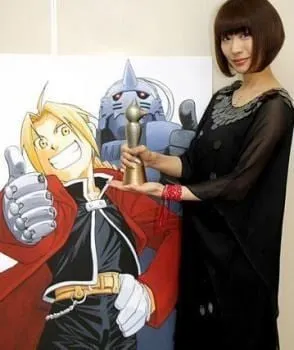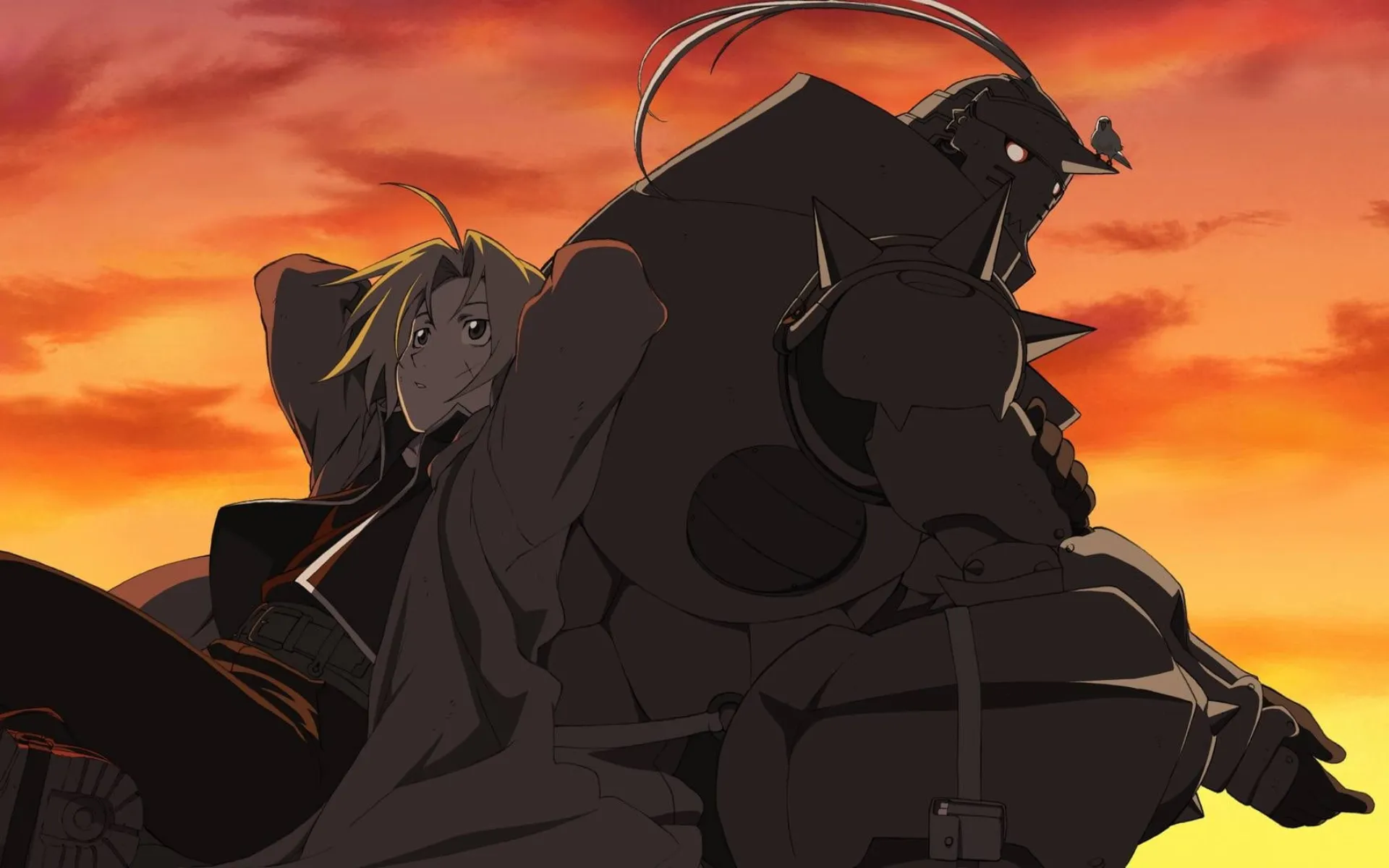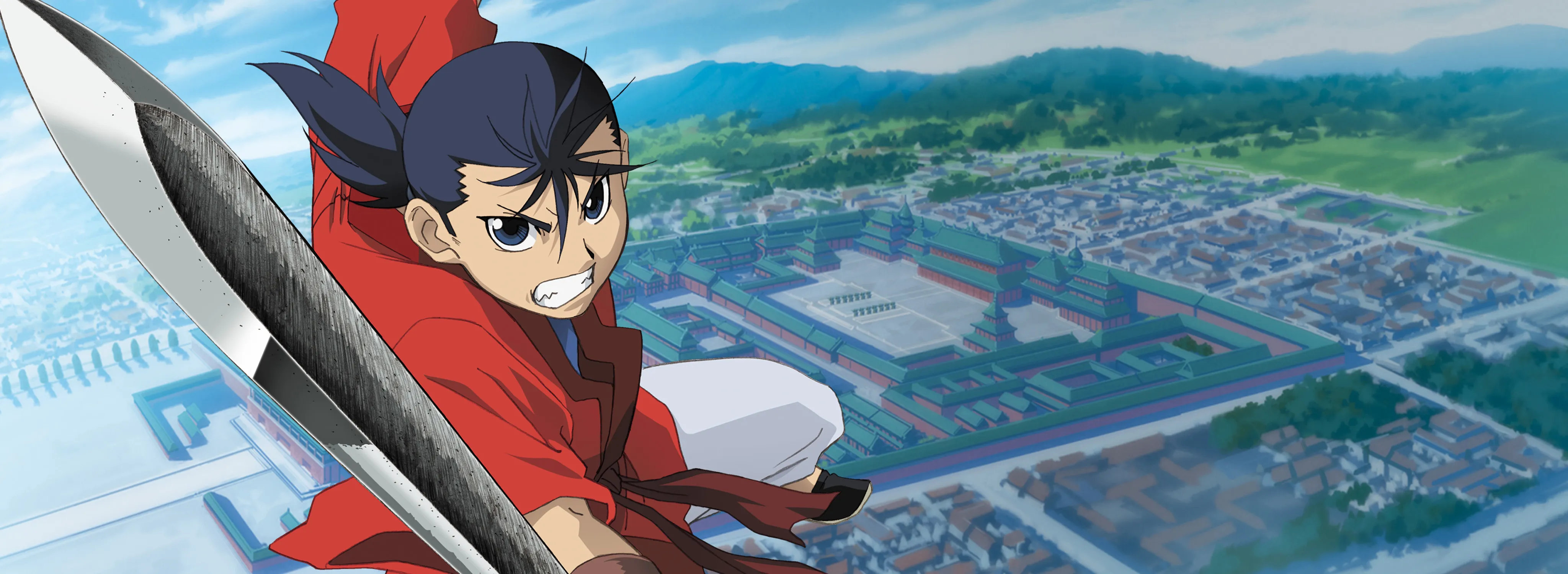Hiromu Arakawa: The Creator of Fullmetal Alchemist
Hiromu Arakawa is a renowned Japanese manga artist best known for her creation of the hit anime and manga series Full Metal Alchemist. She has become a household name in the world of anime and manga and has earned a massive following of fans around the world. This article will explore the life and work of Hiromu Arakawa and how she created one of the most iconic anime and manga series of all time.

Early Life and Education
Hiromu Arakawa, born on May 8, 1973, in Tokachi, Hokkaidō, Japan, is a renowned manga artist who is best known for her work on the hit series Fullmetal Alchemist. Raised on a dairy farm, Arakawa developed an interest in manga at a young age, drawing on her textbooks and creating dōjinshi manga with her friends.
After graduating high school, Arakawa took oil painting classes while continuing to work on her family’s farm. She later moved to Tokyo in the summer of 1999, where she began her career in the manga world as a Square Enix employee and assistant to Hiroyuki Etō. Arakawa’s own career began with the publication of Stray Dog in Square Enix’s Monthly Shōnen Gangan in 1999, which won the ninth 21st Century “Shōnen Gangan” Award. She published one chapter of Shanghai Yōmakikai in Monthly Shōnen Gangan in 2000.
Hiromu Arakawa Works
After graduating high school, Arakawa took oil painting classes while continuing to work on her family’s farm. She later moved to Tokyo in the summer of 1999, where she began her career in the manga world as a Square Enix employee and assistant to Hiroyuki Etō. Arakawa’s own career began with the publication of Stray Dog in Square Enix’s Monthly Shōnen Gangan in 1999, which won the ninth 21st Century “Shōnen Gangan” Award. She published one chapter of Shanghai Yōmakikai in Monthly Shōnen Gangan in 2000.
Stray Dog (1999)
Stray Dog, Arakawa’s debut work, is a one-shot manga that first appeared in Shounen GanGan magazine in 1999. This medieval fantasy story features Fultac, a mercenary and an outlaw who discovers a “military dog,” a creature that is part dog and part human, as he raids a group of bandits. The creature, who becomes Fultac’s companion, starts to follow him on his adventures.
The manga was a huge success with critics and was even awarded the 21st Century Shounen GanGan Award, showcasing Arakawa’s talent and creativity in the world of manga. With its unique and captivating storyline, Stray Dog introduced readers to Arakawa’s creative world-building and storytelling abilities.
In Stray Dog, Arakawa presents a complex protagonist in Fultac, a character who is not just a stereotypical outlaw, but instead a man struggling with his own inner demons and moral dilemmas. Through the relationship between Fultac and the military dog, Arakawa explores the themes of trust, loyalty, and the importance of finding a sense of belonging.
Arakawa’s stunning artwork, combined with her intricate attention to detail, brings the world of Stray Dog to life. From the fantastical creatures to the breathtaking landscapes, Arakawa’s ability to create a believable and immersive world is truly impressive.
Overall, Stray Dog serves as a testament to Arakawa’s skill and talent as a manga artist, and remains a classic in the world of fantasy manga.
Totsugeki Tonari no Enikkusu (2000)
Totsugeki Tonari no Enikkusu, also known as “Attacking Next to Enix,” is a comedic manga created by Hiromu Arakawa. This one-shot was published in 2000 and was a parody that explored the relationship between the manga artist and the popular video game company, Enix (later known as Square-Enix).
The manga follows the story of Arakawa, who is approached by Enix and offered to create a manga adaptation of one of their popular video games. The protagonist is torn between her love for creating original stories and the opportunity to work with a well-established company like Enix.
The manga is a tongue-in-cheek look at the life of a manga artist and the challenges they face in the industry. Through humor and satire, Arakawa sheds light on the trials and tribulations of trying to balance artistic integrity and financial stability. The manga was well-received by readers and is considered a classic example of Arakawa’s unique style and humor.
Overall, Totsugeki Tonari no Enikkusu is a comedic gem that provides a hilarious take on the relationship between the manga industry and video game companies. With its witty humor and charming art style, it remains a timeless classic for manga fans and enthusiasts alike.
Demons of Shanghai (2000)
Arakawa’s first series, “Demons of Shanghai” was published in 1998 and only had four chapters released. Despite its short run, the series left a lasting impression on its readers with its unique blend of humor and adventure. Set in a futuristic, post-apocalyptic Shanghai, the series explores a world where demons freely roam among humans, disguised as regular people. The government is aware of their presence and enforces strict rules to keep them in line.
To enforce these rules, a special team of detectives is formed to monitor the demons and to send back any that break the laws. The main characters of the series are a group of these detectives, who are tasked with keeping the peace and maintaining order in the city. Although the series was cut short, its characters have become iconic, and the series has been frequently referenced as “fake spoilers” for FullMetal Alchemist, due to similarities in the characters and themes.
Despite its short run, “Demons of Shanghai” serves as an important early work for Arakawa and a testament to her unique style and storytelling ability. It is a fascinating glimpse into the early days of her career and a must-read for fans of her later works such as FullMetal Alchemist.
Fullmetal Alchemist (2001 - 2010)

Full Metal Alchemist, created by Hiromu Arakawa, is a highly acclaimed manga series that first appeared in Monthly Shōnen Gangan in July 2001. The series quickly gained popularity among readers, spanning 108 chapters and being collected into 27 volumes. Full Metal Alchemist is recognized for its unique combination of Arakawa’s distinctive art style and writing, which contribute to its dark and impactful thematic elements.
Arakawa’s art style is characterized by its simplicity and darkness, which sets it apart from other manga and anime series. The series’ themes of brotherhood, sacrifice, and morality are further enhanced by Arakawa’s artistic and narrative choices, making Full Metal Alchemist a standout in the shōnen genre.
In recognition of its outstanding quality, Full Metal Alchemist won the 49th Shogakukan Manga Award in the shōnen category in 2004, further solidifying its place as a classic in manga history.
In addition to its success as a manga series, Full Metal Alchemist has also been adapted into two anime series by the studio Bones, with Arakawa playing an active role in the development of the first anime adaptation. Despite not being involved in the making of the script, the anime series still remains faithful to the original manga and has gained a huge following of its own.
It is evident that Arakawa’s creative vision, artistic talent, and writing skills have been instrumental in making Full Metal Alchemist a highly acclaimed and beloved series, both in Japan and around the world.
Souten no Koumori (2006)
Souten no Koumori is a one-shot manga that takes us to the world of Imperial Japan, where the art of ninjitsu is still very much alive. The story revolves around a rogue ninja named Henpukumaru, who, after a failed mission, ends up at the doorstep of a rival lord. The lord’s household takes him in, nursing him back to health despite his dangerous reputation as a ninja.
As Henpukumaru recuperates, he begins to face a moral and existential crisis. He is forced to reflect on the dark and bloody path that led him to become a ninja in the first place, and to consider the actions he’s taken in the name of duty and loyalty. The story explores themes of loyalty, identity, and the struggle between good and evil.
Despite its serious tone, Souten no Koumori is a gripping tale that will keep readers on the edge of their seats. The story is full of twists and turns, as Henpukumaru grapples with the weight of his past and the decisions he must make about his future. It is a powerful tale of a ninja’s journey to redemption, and the courage it takes to face one’s demons. Arakawa’s art style brings to life the world of Imperial Japan, creating a vivid and immersive experience for readers. With its themes of morality and redemption, Souten no Koumori is a manga that will resonate with readers long after they’ve turned the final page.
Hero Tales (2006 - 2010)

Hero Tales is a fantasy/action manga that takes place in an alternate version of Imperial China, where nations vie for power and influence. The story centers around Taitou, a young man who discovers that he has been chosen as the incarnation of one of the stars, giving him supernatural powers. However, he soon realizes that there are other individuals who have been chosen as the incarnations of other stars and will stop at nothing to defeat Taitou and gain control over the Empire.
As Taitou sets out on his journey, he meets and teams up with a cast of diverse and interesting characters, each with their own unique skills and abilities. From skilled warriors and cunning tacticians, to master assassins and wise sages, Taitou’s allies will play a crucial role in his quest to become the greatest star of all.
The world of Hero Tales is filled with mythical creatures, magical powers, and incredible technology, offering readers a rich and immersive experience. From the fantastical landscapes of the mountains and deserts, to the bustling cities of the Empire, the settings in Hero Tales are as diverse and captivating as the characters themselves.
At its core, Hero Tales is a tale of personal growth and self-discovery, as Taitou learns to harness his powers and overcome the challenges that he will face on his journey. With its thrilling action scenes, captivating story, and memorable characters, Hero Tales is a must-read for fans of fantasy and action manga.
Noble Farmer (2008 - ongoing)
Noble Farmer is a unique and captivating work of Arakawa, offering a personal and humorous perspective on her life as a farmer. The manga series follows Arakawa’s experiences as she makes the transition from city life to running a farm in the countryside. Through her story, Arakawa shares her insights into the world of agriculture and the importance of milk in maintaining a healthy lifestyle.
One of the most notable aspects of Noble Farmer is the way Arakawa interweaves her personal experiences with information about the farming industry. The series is filled with interesting facts about the production of milk and other dairy products, as well as the challenges that farmers face on a daily basis.
At the same time, Noble Farmer also offers a glimpse into the life of a city-dweller who has left behind the comforts of city life for the hard work of running a farm. Through her story, Arakawa explores themes of self-discovery and the importance of finding purpose in life.
In addition to its entertaining and educational content, Noble Farmer is also beautifully illustrated, showcasing Arakawa’s impressive artistic skills. The series is a must-read for anyone interested in agriculture, personal development, or simply seeking a lighthearted and enjoyable read.
Silver Spoon (2011 - 2019)
In Silver Spoon, Arakawa masterfully combines comedy, drama, and insight in a heartwarming story that explores the world of agriculture and rural life. Through Hachiken’s journey, we see the challenges and joys of farming and the importance of hard work, self-discovery, and friendship. The manga also touches on issues such as environmental conservation, animal welfare, and the importance of sustainability in modern society.
Aside from its captivating storyline, Silver Spoon is also well-known for its detailed and accurate depiction of farm life, with Arakawa drawing from her own experiences as a farmer. The manga covers a wide range of topics such as crop production, animal husbandry, and food preparation, providing a wealth of information and educating its readers on the intricacies of agriculture.
Overall, Silver Spoon is a timeless masterpiece that appeals to readers of all ages, a perfect balance between humor and drama, education and entertainment. The series has received widespread critical acclaim, and its popularity continues to grow even after its conclusion, cementing Arakawa’s place as one of the greatest manga writers of our time.
The Heroic Legend of Arslan (2013 - ongoing)

In Silver Spoon, Arakawa masterfully combines comedy, drama, and insight in a heartwarming story that explores the world of agriculture and rural life. Through Hachiken’s journey, we see the challenges and joys of farming and the importance of hard work, self-discovery, and friendship. The manga also touches on issues such as environmental conservation, animal welfare, and the importance of sustainability in modern society.
Aside from its captivating storyline, Silver Spoon is also well-known for its detailed and accurate depiction of farm life, with Arakawa drawing from her own experiences as a farmer. The manga covers a wide range of topics such as crop production, animal husbandry, and food preparation, providing a wealth of information and educating its readers on the intricacies of agriculture.
Overall, Silver Spoon is a timeless masterpiece that appeals to readers of all ages, a perfect balance between humor and drama, education and entertainment. The series has received widespread critical acclaim, and its popularity continues to grow even after its conclusion, cementing Arakawa’s place as one of the greatest manga writers of our time.
Hiromu Arakawa's Unique Background and Writing Style
Hiromu Arakawa, the creator of FullMetal Alchemist, is known for her self-portrait as a bespectacled cow, which reflects her upbringing on a dairy farm. This unpretentious alter-ego embodies Arakawa’s approach to writing, which focuses on everyday events and people’s emotions, with a healthy dose of humor and jokes. The humor serves to make the themes and ideas more accessible and entertaining to readers.
Arakawa’s fascination with alchemy and its philosophical aspects was the basis for the creation of FullMetal Alchemist. The concept of Equivalent Exchange was inspired by the hard work and effort of her parents, who ran a farm in Hokkaidō. Arakawa wanted to incorporate social problems into the story, and researched these issues by watching news programs and speaking with people from diverse backgrounds, including refugees, war veterans, and former yakuza. The Elric brothers’ journey of helping people across the country and the themes of family and sacrifice are central to the story and expand on the idea of Equivalent Exchange.
Arakawa was drawn to the Europe of the Industrial Revolution period and was particularly interested in England during this time. She was fascinated by the differences between countries in terms of their culture, architecture, and clothing. She used this inspiration to create a unique fantasy world for Full Metal Alchemist, infusing it with her own original flavor.
When Full Metal Alchemist began serialization, Arakawa had a clear idea of how the story would end. However, as the plot developed, she felt that some of the characters were maturing and made changes to the story accordingly. The character designs were inspired by the works of manga authors Suihō Tagawa and Hiroyuki Eto, and Arakawa considers her artwork to be a mix of both of these influences. The comedy is central to the manga, as Arakawa believes that it is important for the story to be entertaining. She tries to minimize the focus on sad scenes and emphasizes the humor in the series.
Awards and Accolades
Hiromu Arakawa’s work has been recognized with numerous awards throughout her career. Fullmetal Alchemist won the Shogakukan Manga Award in 2004 and was nominated for the Seiun Award in 2005. Arakawa herself won the Shogakukan Manga Award for Best Shōnen Manga in 2005 and the Osamu Tezuka Cultural Prize “New Artist Prize” in 2006. In 2012, her work on “Silver Spoon” also win the Shogakukan Manga Award for Best Shōnen Manga.
Private Life
Hiromu Arakawa is known for being a private person and has not publicly discussed her personal life in great detail. It is known that she is married and has children, but she has not shared any further information about her family.
Conclusion
Hiromu Arakawa is a highly accomplished manga artist and creator of the beloved series Fullmetal Alchemist. Her work has received widespread critical acclaim and has been adapted into multiple anime, films, and video games. Despite her success, she remains a private person and little is known about her personal life. While her next project remains a mystery, her previous works have undoubtedly cemented her place in the manga industry and earned her a significant net worth.
